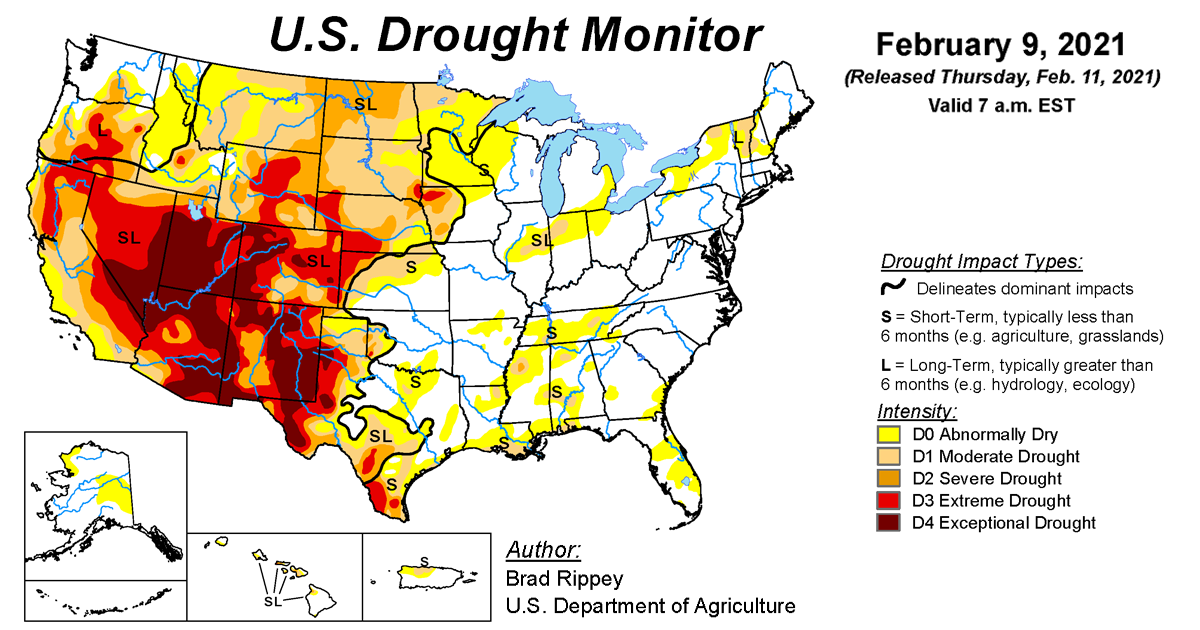
According to the February 9, 2021, U.S. Drought Monitor, moderate to exceptional drought covers 38.4% of the United States including Puerto Rico, a slight increase from last week’s 38.3%. The worst drought categories (extreme to exceptional drought) remained the same as last week: 17.0%.
The upper-level circulation pattern over the contiguous United States underwent a significant change. An upper-level trough became anchored over central North America and intensified over the central United States, funneling cold Canadian air into the country east of the Rockies. Pacific weather systems moving in the jet stream flow tracked along the edge of the upper-level trough, bringing precipitation to the Pacific Northwest coast, the northern Rockies to central Plains, and western Great Lakes.
As cold fronts associated with the Pacific weather systems and Canadian air masses penetrated into the Deep South, they tapped Gulf of Mexico moisture to bring precipitation to the eastern Gulf coast and Atlantic coast. Much of the West, from central Washington to California and across the Southwest, and most of New England were warmer and drier than normal for the week, while colder-than-normal air flooded into the country from Montana to the Southeast. It was also drier than normal from the southern Plains to the Appalachians and across parts of the northern Plains.
Drought or abnormal dryness contracted or decreased in intensity in some areas where above-normal precipitation fell. Drought or abnormal dryness intensified or expanded in parts of the southern Plains, Deep South, and Midwest. Drought contraction almost balanced expansion, so the overall U.S. drought footprint increased slightly this week.
Abnormal dryness and drought are currently affecting over 120 million people across the United States including Puerto Rico—about 38.7% of the population.

The full U.S. Drought Monitor weekly update is available from Drought.gov.
In addition to Drought.gov, you can find further information on the current drought as well as on this week’s Drought Monitor update at the National Drought Mitigation Center. See their recent news releases.
The most recent U.S. Drought Outlook is available from NOAA’s Climate Prediction Center and the U.S. Department of Agriculture provides information about the drought’s influence on crops and livestock.
For additional drought information, follow #DroughtMonitor on Facebook and Twitter.



